Posted on May 27th, 2021 by Mary Lord
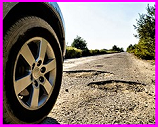 Acting as civil engineers, students in grades 9-12 research how to best use piezoelectric materials to detect road damage, setting up model roads, creating their own experiment procedures, and analyzing voltage changes caused by the vibrations of simulated vehicles. They then write up their research and conclusions as if presenting evidence to federal transportation officials about how piezo elements can be used to indicate road damage and help determine when roads need maintenance.
Acting as civil engineers, students in grades 9-12 research how to best use piezoelectric materials to detect road damage, setting up model roads, creating their own experiment procedures, and analyzing voltage changes caused by the vibrations of simulated vehicles. They then write up their research and conclusions as if presenting evidence to federal transportation officials about how piezo elements can be used to indicate road damage and help determine when roads need maintenance.
Read More
Filed under: Class Activities, Grades 9-12, Lesson Plans | Comments Off on Preventing Potholes
Tags: asphalt, highway construction, NGSS aligned activity, pavement, piezoelectric materials, pothole repair, road repair, Sparkfun, TeachEngineering activity, transportation engineering, Vernier
Posted on May 21st, 2021 by Mary Lord
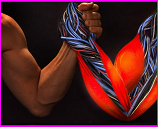 Students in grades 5 to 7 learn about how muscles work and follow the engineering design process to create their own biomedical device to aid in the recovery of a strained bicep. They discover the importance of rest to muscle recovery and that muscles (just like engineers!) work together to achieve a common goal.
Students in grades 5 to 7 learn about how muscles work and follow the engineering design process to create their own biomedical device to aid in the recovery of a strained bicep. They discover the importance of rest to muscle recovery and that muscles (just like engineers!) work together to achieve a common goal.
Image from NASA Jet Propulsion Lab
Read More
Filed under: Class Activities, Grades 6-8, Grades K-5, Lesson Plans | Comments Off on Build an Artificial Bicep
Tags: anatomy, biceps, biomechanical engineering, Biomedical Engineering, Class Activities, Grades 6-8, Grades K-5, Human Body, Lesson Plan, muscles
Posted on February 4th, 2021 by Mary Lord
 Students in grades 6-8 use their knowledge about how healthy heart valves function to design, construct, and implant prototype replacement mitral valves for hypothetical patients’ hearts. In the process, they discover the pros and cons of different types of artificial heart valves based on materials, surgery requirements, and lifespan.
Students in grades 6-8 use their knowledge about how healthy heart valves function to design, construct, and implant prototype replacement mitral valves for hypothetical patients’ hearts. In the process, they discover the pros and cons of different types of artificial heart valves based on materials, surgery requirements, and lifespan.
Read More
Filed under: Class Activities, Grades 6-8, Lesson Plans | Comments Off on Saving a Life: Heart Valve Replacement
Tags: Biomedical Engineering, Class Activities, Grades 6-8, heart valve, human physiology, Lesson Plan, teachengineering
Posted on January 21st, 2021 by Mary Lord
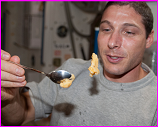 Like NASA engineering teams, students learn about and then follow the steps of the engineering design process to design and build original model devices to help astronauts eat in a microgravity environment—their own creative devices for food storage and meal preparation.
Like NASA engineering teams, students learn about and then follow the steps of the engineering design process to design and build original model devices to help astronauts eat in a microgravity environment—their own creative devices for food storage and meal preparation.
Read More
Filed under: Class Activities, Grades K-5, Lesson Plans | Comments Off on Lunch in Outer Space!
Tags: astronauts, Class Activities, Engineering Design, Engineering Design Process, Grades K-5, International Space Station, Living in Space, microgravity, NASA, space food, teachengineering
Posted on December 29th, 2020 by Mary Lord
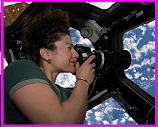 Built for engineering and science discovery, the International Space Station’s cupola also delivers awe and inspiration. Get a glimpse of the engineering behind this iconic addition to the ISS along with classroom activities and resource links as we celebrate 20 years of human habitation in space.
Built for engineering and science discovery, the International Space Station’s cupola also delivers awe and inspiration. Get a glimpse of the engineering behind this iconic addition to the ISS along with classroom activities and resource links as we celebrate 20 years of human habitation in space.
Read More
Filed under: Lesson Plans, Special Features, Web Resources | Comments Off on Window On Our World
Tags: 20th anniverary of humans in space, Aerospace Engineering, astronauts, cupola, Deborah Lee Rose, Engineering, Engineering Design, International Space Station, NASA, Space
Posted on June 19th, 2020 by Mary Lord
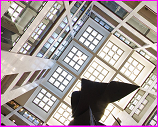 High school students explore the many ways that engineers provide natural lighting to interior spaces by analyzing various methods of daylighting and then constructing model houses from foam core board based on their observations and calculations of the optimal use of available “sunlight.”
High school students explore the many ways that engineers provide natural lighting to interior spaces by analyzing various methods of daylighting and then constructing model houses from foam core board based on their observations and calculations of the optimal use of available “sunlight.”
Hart Building atrium photo by the Architect of the Capitol
Read More
Filed under: Class Activities, Grades 9-12, Grades 9-12, Lesson Plans | Comments Off on Daylighting Design
Tags: architectural engineering, Architecture, Class Activities, daylighting, energy conservation, Engineering Design Process, Grades 9-12, Lesson Plan, lighting engineering, Solar Energy, solstice, windows
Posted on May 8th, 2020 by Mary Lord
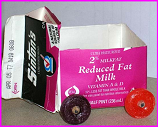 In this open-ended design activity, students in grades 3 to 5 use everyday materials such as water bottles and straws to build small-scale transportation devices that incorporate two simple machines: a wheel and axle, and a lever. They race their vehicles, measuring distance, time and weight; and then calculate speed.
In this open-ended design activity, students in grades 3 to 5 use everyday materials such as water bottles and straws to build small-scale transportation devices that incorporate two simple machines: a wheel and axle, and a lever. They race their vehicles, measuring distance, time and weight; and then calculate speed.
Read More
Filed under: Class Activities, Grades K-5, Grades K-5, Lesson Plans | Comments Off on Wheeling It In
Tags: bicycle, Engineering Design Process, Geometry, levers, measurement, NGSS aligned activity, Physics, simple machines, transporation, vehicle
Posted on April 11th, 2020 by Mary Lord
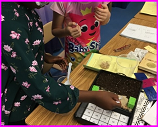 With schools closed during the Covid-19 pandemic, ASEE members and other engineering and technology educators are posting daily design challenges, hosting teacher meetups, and creating ways to engage students in STEM learning at home.
With schools closed during the Covid-19 pandemic, ASEE members and other engineering and technology educators are posting daily design challenges, hosting teacher meetups, and creating ways to engage students in STEM learning at home.
Read More
Filed under: Class Activities, Grades 6-8, Grades 6-8, Grades 9-12, Grades 9-12, Grades K-5, Grades K-5, K-12 Outreach Programs, Lesson Plans, Special Features, Web Resources | Comments Off on STEM @ Home Resources
Tags: American Society for Engineering Education, Class Activities, COVID-19, Curriculum, digital libraries, distance education, home schooling, Internet Resources, Lesson Plans, remote instruction, Resources for Teachers, STEM education, Web Resources
Posted on April 6th, 2020 by Mary Lord
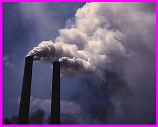 Middle school students measure how much dust, pollen, and other particulate matter is present in the air around them by placing “pollution detectors” in various locations and then examining the captured air particles to determine which places have more or fewer airborne particles. In a companion activity, they engineer methods of removing contaminants.
Middle school students measure how much dust, pollen, and other particulate matter is present in the air around them by placing “pollution detectors” in various locations and then examining the captured air particles to determine which places have more or fewer airborne particles. In a companion activity, they engineer methods of removing contaminants.
Read More
Filed under: Class Activities, Grades 6-8, Grades 6-8, Lesson Plans | Comments Off on I Breathe WHAT?!
Tags: air pollution, data, Environmental Engineering, investigation, measurement, NGSS aligned, pollen
 Acting as civil engineers, students in grades 9-12 research how to best use piezoelectric materials to detect road damage, setting up model roads, creating their own experiment procedures, and analyzing voltage changes caused by the vibrations of simulated vehicles. They then write up their research and conclusions as if presenting evidence to federal transportation officials about how piezo elements can be used to indicate road damage and help determine when roads need maintenance.
Acting as civil engineers, students in grades 9-12 research how to best use piezoelectric materials to detect road damage, setting up model roads, creating their own experiment procedures, and analyzing voltage changes caused by the vibrations of simulated vehicles. They then write up their research and conclusions as if presenting evidence to federal transportation officials about how piezo elements can be used to indicate road damage and help determine when roads need maintenance.








 Students in grades 5 to 7 learn about how muscles work and follow the engineering design process to create their own biomedical device to aid in the recovery of a strained bicep. They discover the importance of rest to muscle recovery and that muscles (just like engineers!) work together to achieve a common goal.
Students in grades 5 to 7 learn about how muscles work and follow the engineering design process to create their own biomedical device to aid in the recovery of a strained bicep. They discover the importance of rest to muscle recovery and that muscles (just like engineers!) work together to achieve a common goal. Students in grades 6-8 use their knowledge about how healthy heart valves function to design, construct, and implant prototype replacement mitral valves for hypothetical patients’ hearts. In the process, they discover the pros and cons of different types of artificial heart valves based on materials, surgery requirements, and lifespan.
Students in grades 6-8 use their knowledge about how healthy heart valves function to design, construct, and implant prototype replacement mitral valves for hypothetical patients’ hearts. In the process, they discover the pros and cons of different types of artificial heart valves based on materials, surgery requirements, and lifespan. Like NASA engineering teams, students learn about and then follow the steps of the engineering design process to design and build original model devices to help astronauts eat in a microgravity environment—their own creative devices for food storage and meal preparation.
Like NASA engineering teams, students learn about and then follow the steps of the engineering design process to design and build original model devices to help astronauts eat in a microgravity environment—their own creative devices for food storage and meal preparation.  Built for engineering and science discovery, the International Space Station’s cupola also delivers awe and inspiration. Get a glimpse of the engineering behind this iconic addition to the ISS along with classroom activities and resource links as we celebrate 20 years of human habitation in space.
Built for engineering and science discovery, the International Space Station’s cupola also delivers awe and inspiration. Get a glimpse of the engineering behind this iconic addition to the ISS along with classroom activities and resource links as we celebrate 20 years of human habitation in space. High school students explore the many ways that engineers provide natural lighting to interior spaces by analyzing various methods of daylighting and then constructing model houses from foam core board based on their observations and calculations of the optimal use of available “sunlight.”
High school students explore the many ways that engineers provide natural lighting to interior spaces by analyzing various methods of daylighting and then constructing model houses from foam core board based on their observations and calculations of the optimal use of available “sunlight.” In this open-ended design activity, students in grades 3 to 5 use everyday materials such as water bottles and straws to build small-scale transportation devices that incorporate two simple machines: a wheel and axle, and a lever. They race their vehicles, measuring distance, time and weight; and then calculate speed.
In this open-ended design activity, students in grades 3 to 5 use everyday materials such as water bottles and straws to build small-scale transportation devices that incorporate two simple machines: a wheel and axle, and a lever. They race their vehicles, measuring distance, time and weight; and then calculate speed.  With schools closed during the Covid-19 pandemic, ASEE members and other engineering and technology educators are posting daily design challenges, hosting teacher meetups, and creating ways to engage students in STEM learning at home.
With schools closed during the Covid-19 pandemic, ASEE members and other engineering and technology educators are posting daily design challenges, hosting teacher meetups, and creating ways to engage students in STEM learning at home. Middle school students measure how much dust, pollen, and other particulate matter is present in the air around them by placing “pollution detectors” in various locations and then examining the captured air particles to determine which places have more or fewer airborne particles. In a companion activity, they engineer methods of removing contaminants.
Middle school students measure how much dust, pollen, and other particulate matter is present in the air around them by placing “pollution detectors” in various locations and then examining the captured air particles to determine which places have more or fewer airborne particles. In a companion activity, they engineer methods of removing contaminants.